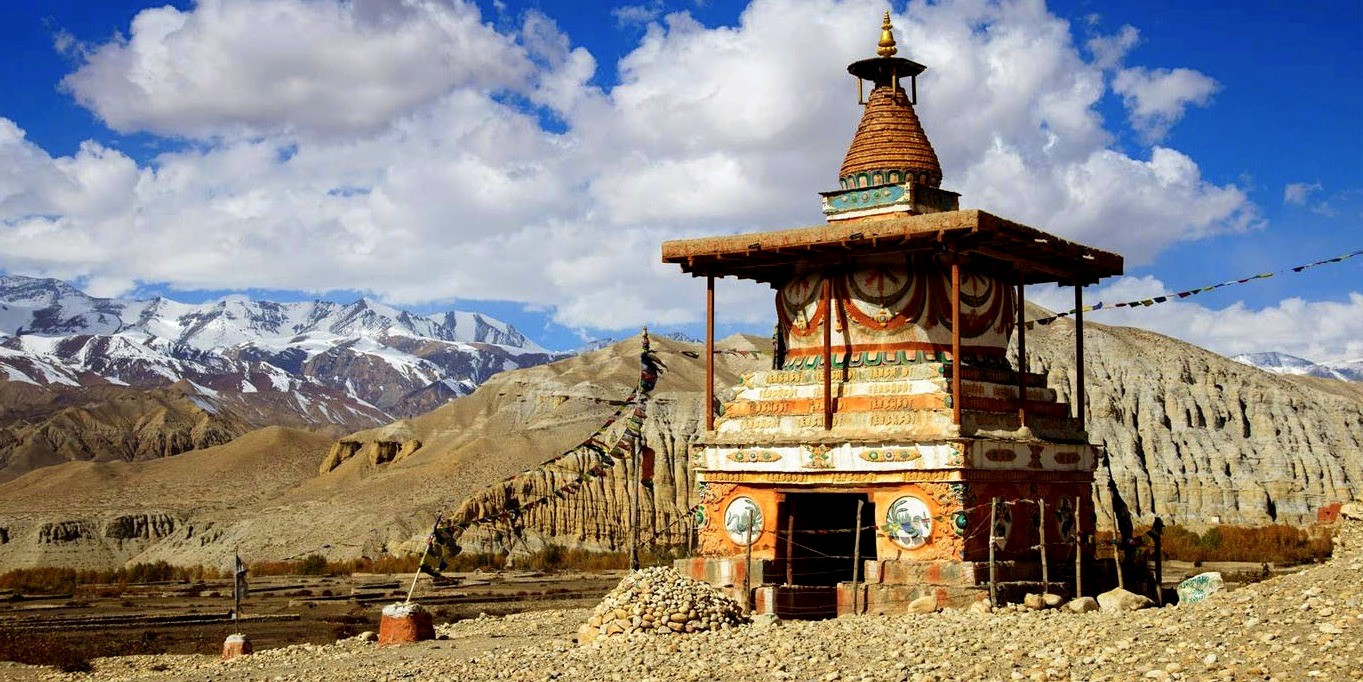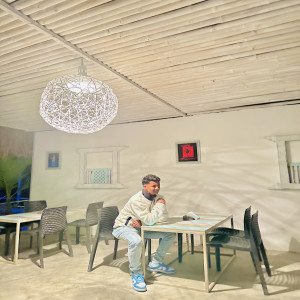Everest Base Camp
Everest Base Camp is one of the most sought-after destinations for trekkers around the world. worldwide attitude of 5,364 meters (17,598 feet), it serves as the staging ground for climbers aiming to summit Mount Everest, the highest peak on Earth. The trek to Everest Base Camp not only promises of being at the foot of the world's highest mountain but also offers a live experience in the rich Sherpa culture and breathtaking views of the Himalayas.
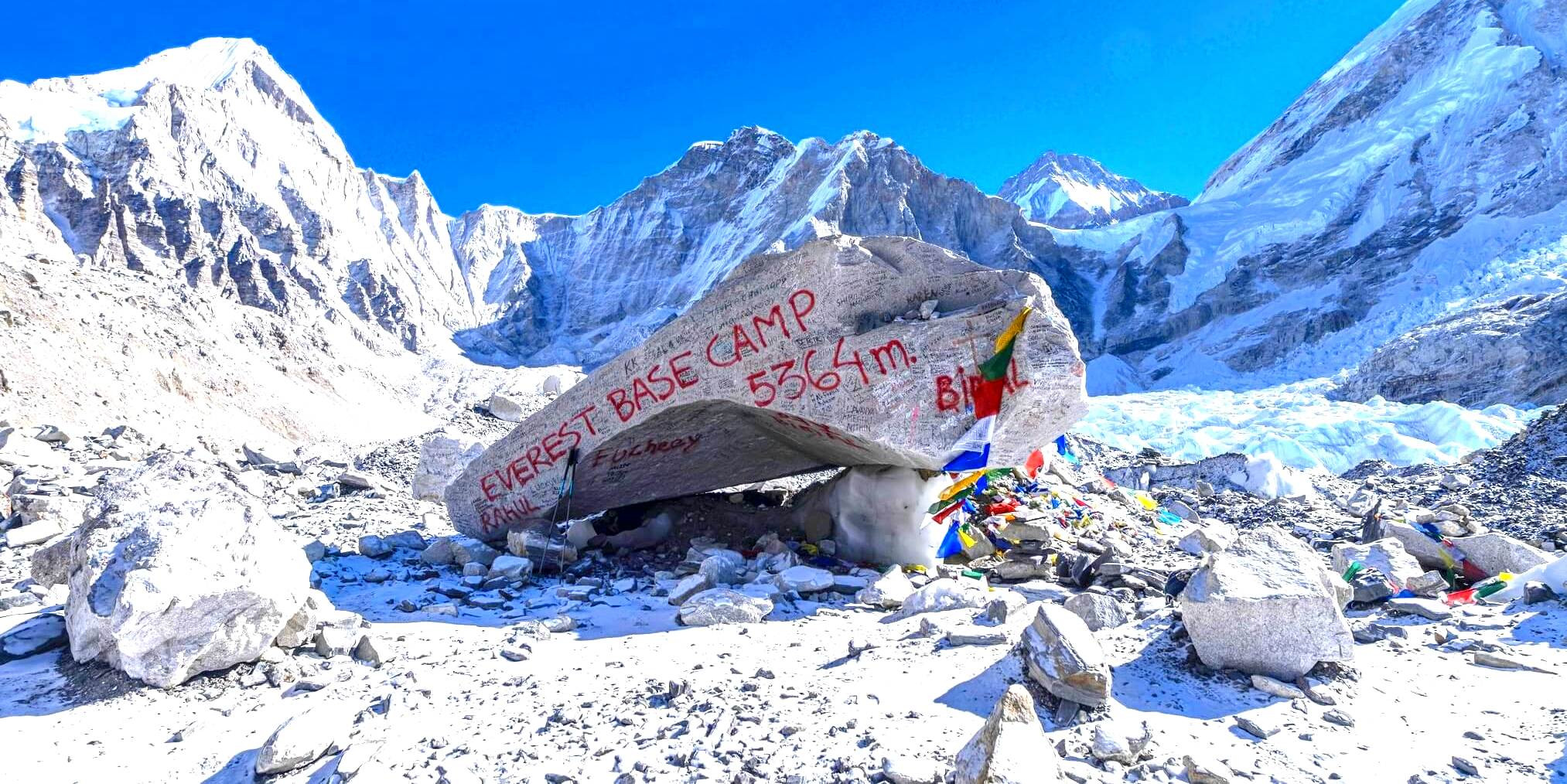
Key Highlights of the Everest Base Camp Trek
-
Scenic Flight to Lukla: The adventure begins with a thrilling flight from Kathmandu to Lukla, one of the most dramatic short flights in the world, offering views of the vast Himalayan range.
-
Namche Bazaar: Often referred to as the gateway to the high Himalayas, Namche Bazaar is a bustling hub where trekkers acclimatize. It's a vibrant town filled with cafes, gear shops, and even a weekly market.
-
Tengboche Monastery: On the way to Base Camp, you'll pass through Tengboche, home to the largest monastery in the Khumbu region. This spiritual site offers panoramic views of the Himalayan giants, including Everest, Ama Dablam, and Lhotse.
-
Khumbu Glacier: As you approach Base Camp, you'll traverse the edge of the Khumbu Glacier, a dramatic and moving mass of ice that forms a key section of the trek.
-
Everest Base Camp: Reaching the Base Camp itself is an exhilarating experience, offering a sense of achievement and the unique atmosphere of an expedition base teeming with climbers and trekkers from all over the globe.
-
Kala Patthar: While Everest itself is not visible from Base Camp, a climb to Kala Patthar (5,545 meters) offers the best view of Everest’s peak, providing a breathtaking panorama that includes several of the world’s highest mountains.
Preparation Tips
-
Physical Fitness: The trek is demanding, requiring good requires fitness and stamina. Regular cardio exercises, strength training, and long-distance hiking can help prepare your body for the strenuous trek.
-
Acclimatization: Proper acclimatization is essential to avoid altitude sickness. Plan your itinerary with adequate days for acclimatization.
-
Gear and Equipment: Packing the right is crucial to packs crucial. Esseude is a good quality sleehigh-qualityurdy hiking boots, thermal clothing, a down jacket, and layers for changing conditions.
-
Guides and Porters: Hiring a knowledgeable guide and porters can enhance your trekking experience, providing insights into the local culture and ensuring safety.
The Everest Base Camp trek with a prepared mind and body can lead to one of the most unforgettable adventures of your life, filled with stunning landscapes, cultural depth, and personal achievement.
Annapurna Circuit
The Annapurna Circuit is renowned as one of the world's classic treks, looping around the Annapurna massif in Nepal. This trek provides an incredibly varied landscape, ranging from the subtropical greenery of the lowlands to the high-altitude desert plateaus, showcasing a stunning array of biodiversity and cultural diversity.
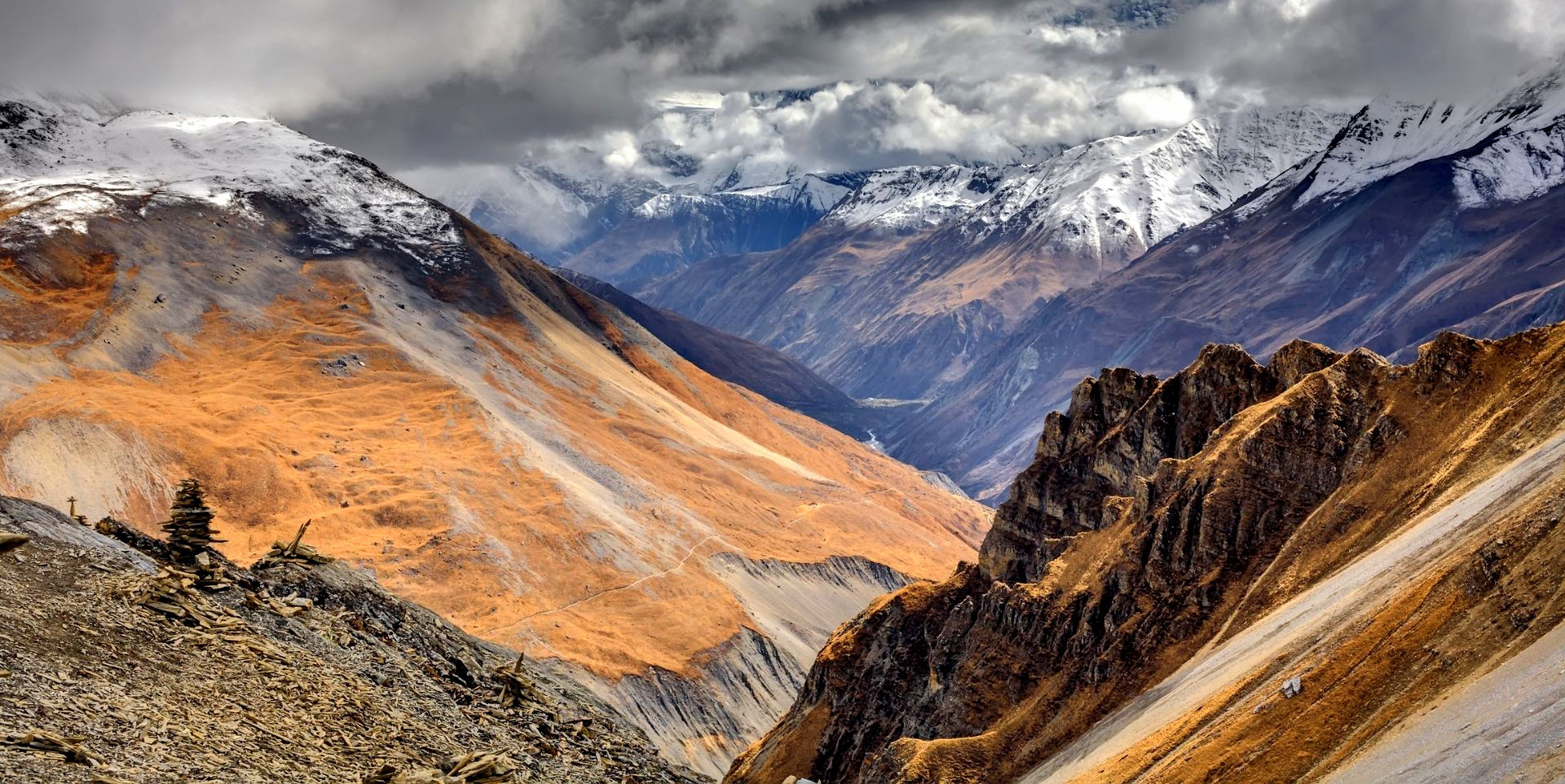
Key Highlights of the Annapurna Circuit Trek
-
Diverse Climates and Ecosystems: Starting from Besisahar in the Marshyangdi river valley, the trek quickly ascends through subtropical forests, terraced rice fields, and alpine woodlands before reaching the arid Tibetan-like desert in the Manang District.
-
Thorong La Pass: The climax of the trek is crossing the Thorong La Pass at 5,416 meters (17,769 feet), one of the highest and most challenging passes in the world. The view from the pass is truly spectacular, offering panoramic vistas of the Annapurna massif and the surrounding peaks.
-
Muktinath: After crossing Thorong La, trekkers descend to Muktinath, an important pilgrimage site for both Hindus and Buddhists. The temple complex is a spiritual site with eternal flames fueled by natural gas seeps, which have been burning for thousands of years.
-
Manang Village: Before crossing the pass, trekkers often rest in Manang to acclimatize. This village offers stunning views of Annapurna III and Gangapurna and is a great place to learn about the local culture and traditional Himalayan lifestyle.
-
Marpha: Known as the apple capital of Nepal, Marpha is famous for its orchards and local apple brandy. This charming village with its narrow alleyways and white-washed houses provides a picturesque and relaxing stopover.
-
Tilicho Lake: One of the highest lakes in the world, Tilicho Lake is an optional side trek that is highly recommended. The trek to the lake is challenging but rewards with breathtaking natural beauty.
Preparation Tips
-
Fitness: The trek is physically demanding, with daily walks averaging 6-7 hours. Pre-trek fitness conditioning is important.
-
Acclimatization: It's crucial to incorporate acclimatization days within your itinerary to adapt to high altitudes and reduce the risk of altitude sickness.
-
Packing Essentials: Include layered clothing, a high-quality sleeping bag, trekking poles, and a first-aid kit. Weather can change rapidly, so be prepared for cold and possible precipitation.
-
Permits: Trekkers need the Annapurna Conservation Area Permit (ACAP) and the Trekkers’ Information Management System (TIMS) card before embarking on the circuit.
The Annapurna Circuit offers an unforgettable adventure through one of the most geographically and culturally diverse regions in the world, making it a must-visit destination for trekkers globally. With careful preparation and respect for the local culture and environment, this trek can be a transformative experience.
Chitwan National Park
Chitwan National Park, located in the Terai region of Nepal, is one of the country's natural treasures, providing a unique ecosystem with dense forests, grassy plains, and lush riverine landscapes. Established in 1973 and declared a UNESCO World Heritage Site in 1984, Chitwan is renowned for its biodiversity, including some of the last populations of single-horned Asiatic rhinoceros and the Bengal tiger.
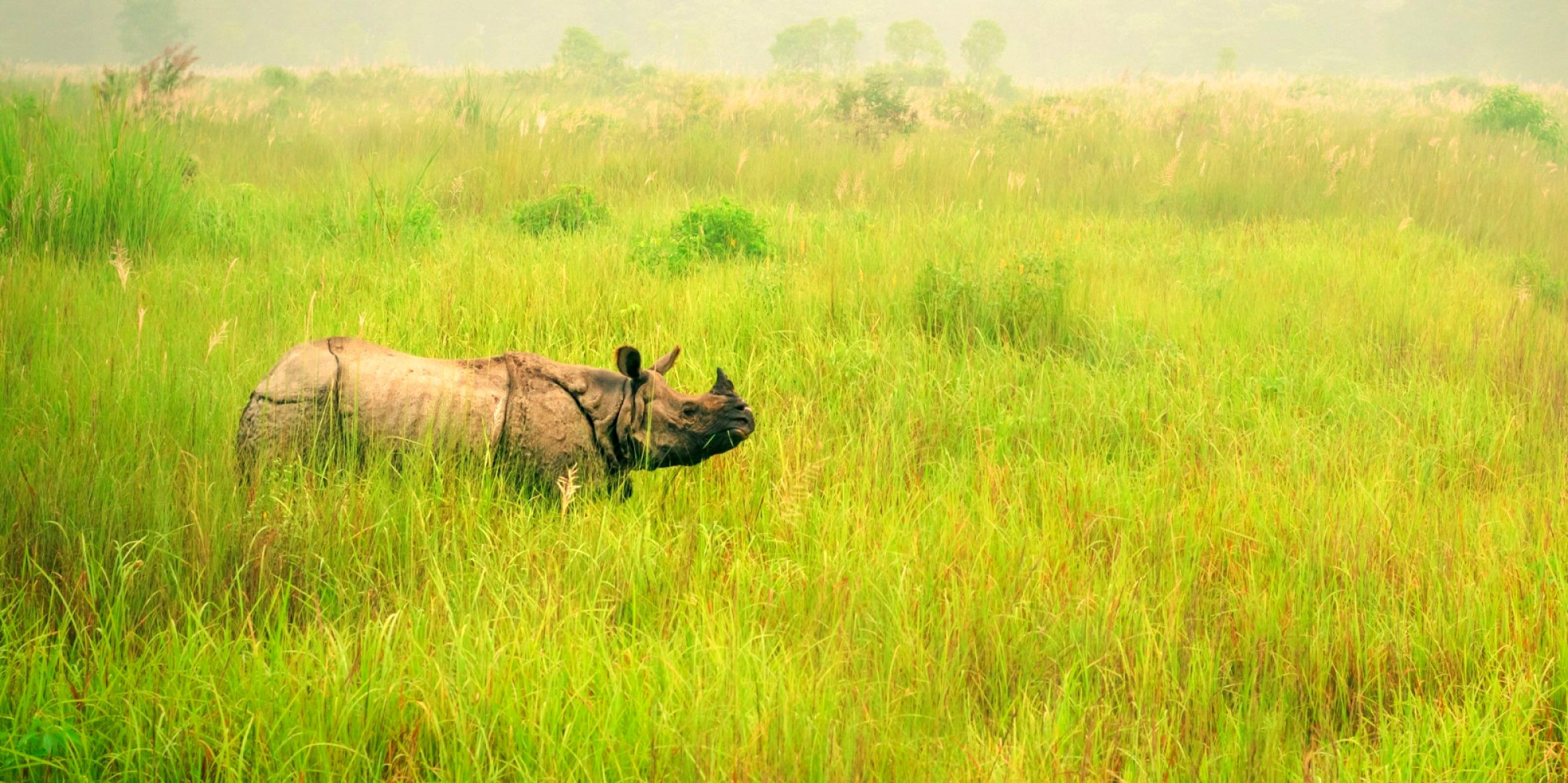
Key Highlights of Chitwan National Park
-
Wildlife Viewing: Chitwan offers one of the best wildlife viewing experiences in Asia. Visitors can see a variety of animals on elephant-back safaris, jeep tours, or guided jungle walks. Key species include the endangered one-horned rhinoceros, Bengal tigers, leopards, sloth bears, and several deer species.
-
Bird Watching: With over 500 species of birds, including several migratory species, Chitwan is a paradise for birdwatchers. The park’s diverse habitats provide a perfect setting for spotting rare and common birds, including the Bengal florican, black-chinned yuhina, and Gould’s sunbird.
-
Canoe Trips: Canoeing down the Rapti or Narayani rivers is a peaceful way to explore the park’s rich water biodiversity and get close views of crocodiles and water birds. Early mornings offer serene river landscapes shrouded in mist—a magical experience.
-
Cultural Experiences: The park is surrounded by indigenous Tharu villages, where visitors can experience local culture and lifestyle. Cultural tours and homestays offer insights into the Tharu people's unique traditions, dances, and crafts.
-
Visitor Centers and Museums: The park features visitor centers and museums that provide educational insights into its history, wildlife, and conservation efforts. These are great spots to deepen your understanding of the park's ecological significance and conservation challenges.
Travel Tips
-
Respect Wildlife: Always maintain a safe distance from animals and follow your guide’s instructions to avoid disturbing wildlife.
-
Choose Responsible Tour Operators: Opt for tours that emphasize sustainable practices and respect for wildlife and local communities.
-
Prepare for the Weather: Pack light, breathable clothing but also bring a jacket for cooler mornings and evenings. Don’t forget mosquito repellent and sun protection.
-
Health Precautions: While Chitwan is less malarial than it used to be, taking precautions against mosquito bites is still advised, especially during and right after the monsoon season.
Visiting Chitwan National Park offers an incredible opportunity to witness Nepal's wildlife in its natural habitat and to gain appreciation for the country’s efforts in conservation. It’s a must-visit destination for nature lovers and anyone interested in wildlife photography or ecotourism.
Kathmandu Valley
Kathmandu Valley, the heart of Nepal's cultural, political, and economic life, is a vibrant mix of history, spirituality, and bustling urban life. Surrounded by a ring of green mountain walls and dotted with terraced fields, the valley is home to the capital city, Kathmandu, along with two other major cities, Patan and Bhaktapur. Each city boasts its unique atmosphere and set of spectacular historical and cultural sites, many of which are recognized as UNESCO World Heritage Sites.
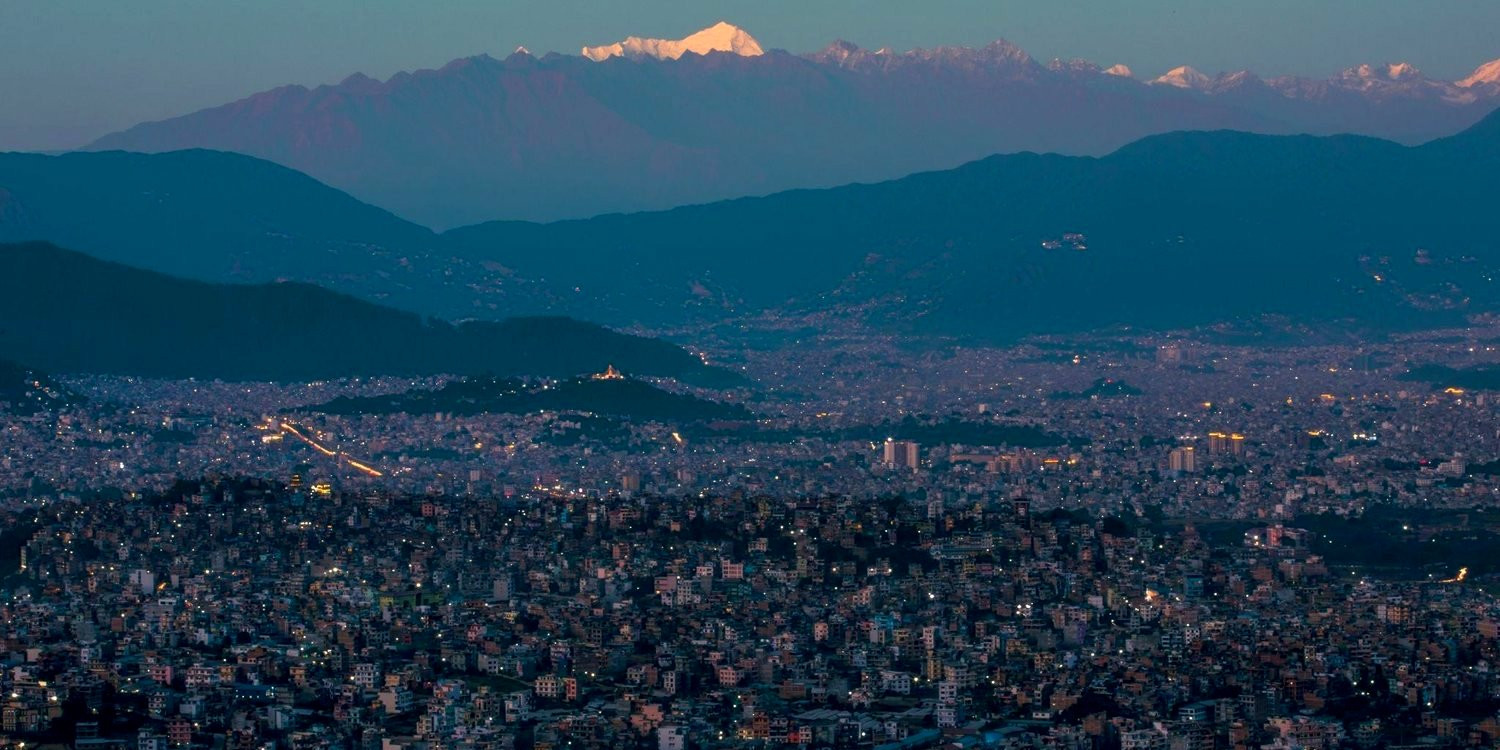
Key Highlights of Kathmandu Valley
-
Kathmandu Durbar Square: Located in the heart of the old city, Kathmandu Durbar Square is a complex of palaces, courtyards, and temples that was the seat of the ancient Malla kings of Kathmandu. It is known for its exquisite craftsmanship and architecture. The square was heavily damaged in the 2015 earthquake, but restoration efforts continue to preserve its historical legacy.
-
Swayambhunath Stupa (Monkey Temple): Perched on a hilltop, Swayambhunath is one of the most ancient and holy shrines in the Kathmandu Valley, offering panoramic views of the city. The stupa is a major site of pilgrimage and worship for Nepali Buddhists and tourists alike.
-
Patan Durbar Square: Located in Lalitpur city, Patan Durbar Square is renowned for its fine arts and beautiful, intricate carvings on temples and palaces. It showcases the architectural genius of the Newar artisans of the Kathmandu Valley.
-
Bhaktapur Durbar Square: This well-preserved square is less crowded and offers a more authentic experience compared to its counterparts in Kathmandu and Patan. Bhaktapur has maintained its traditional aspects and offers visitors a mix of culture, history, and architecture.
-
Pashupatinath Temple: One of the most sacred Hindu temples in Nepal, Pashupatinath is dedicated to Lord Shiva and attracts thousands of pilgrims each year. Located on the banks of the Bagmati River, it is also the site of several cremation ghats where traditional funerals take place daily.
-
Boudhanath Stupa: One of the largest stupas in the world, Boudhanath is a focal point of Tibetan Buddhism in Nepal. The area surrounding the stupa is filled with monasteries and Tibetan artifacts shops.
Travel Tips
-
Cultural Sensitivity: When visiting religious sites, dress modestly and remove shoes where required. Always walk clockwise around temples and stupas.
-
Avoid Peak Hours: To fully appreciate the historic sites without the crowds, plan to visit early in the morning or late afternoon.
-
Stay Hydrated and Protected: The sun can be quite strong, even on cooler days, so wearing sunscreen and staying hydrated is important.
-
Explore Local Crafts: The valley is famous for its artisans, with local crafts available for purchase such as pottery, wood carving, and thangka paintings.
Kathmandu Valley offers a compelling blend of historical grandeur, spiritual richness, and vibrant local life, making it an essential destination for any visitor to Nepal. Whether you're exploring ancient temples, shopping for unique crafts, or soaking in the local culture, Kathmandu Valley provides an unforgettable experience rich in history and tradition.
Lumbini
Lumbini, located in the southern plains of Nepal, is revered as the birthplace of Siddhartha Gautama, who later became known as Buddha. This historic site represents a significant spiritual sanctuary and has been designated a UNESCO World Heritage Site. Lumbini attracts pilgrims from all over the world, especially from countries where Buddhism is practiced, offering a profound insight into the beginnings of Buddhism.
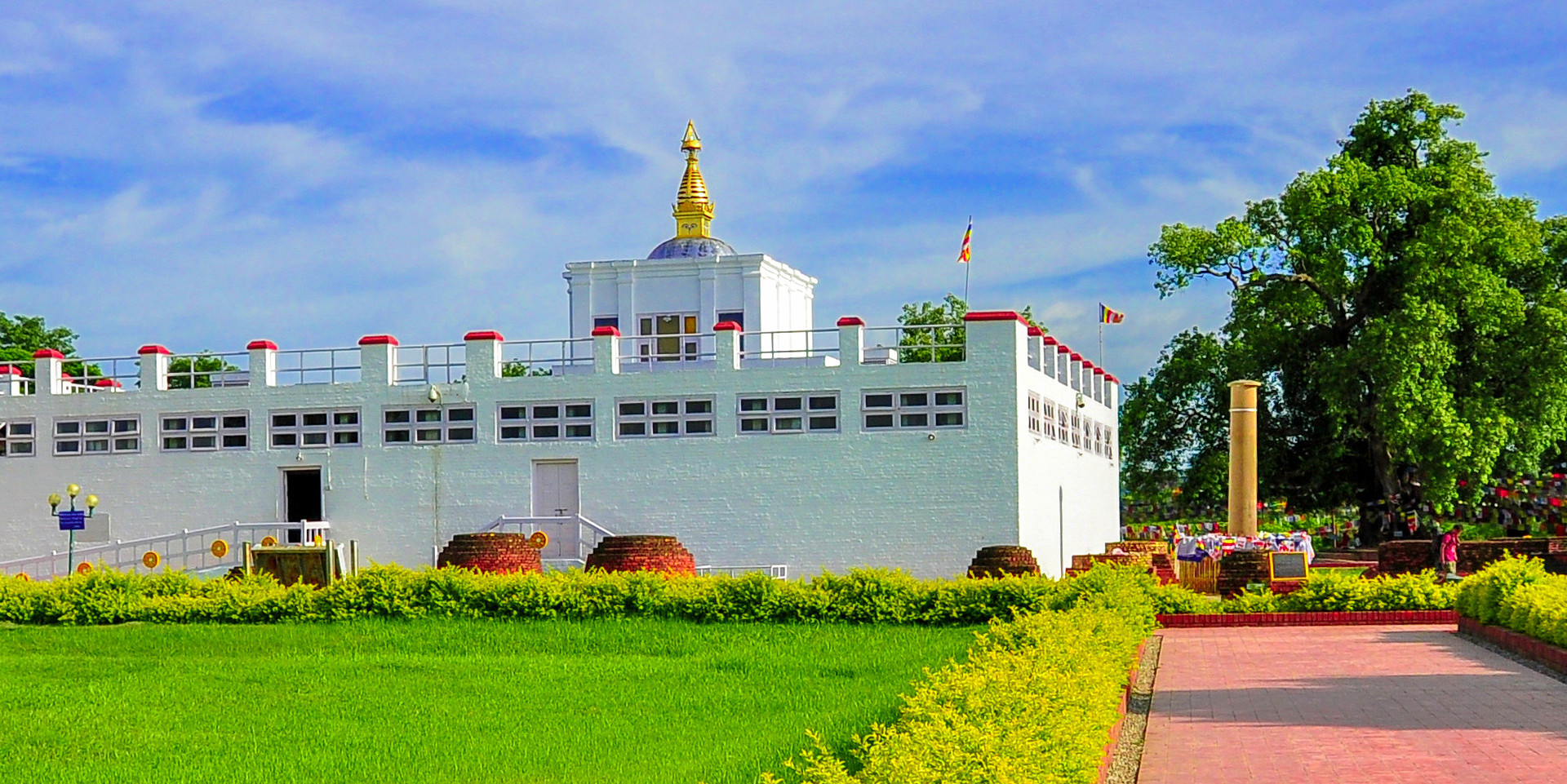
Key Highlights of Lumbini
-
Maya Devi Temple: The heart of Lumbini is the Maya Devi Temple, which marks the precise spot where Queen Maya Devi gave birth to Siddhartha Gautama. The site is sanctified by a marker stone, protected by a glass cover, and surrounded by the remains of ancient temples and stupas.
-
Sacred Garden and Puskarini Pond: Surrounding the Maya Devi Temple is the Sacred Garden, which provides a serene environment for meditation and reflection. Nearby is the Puskarini Pond where Maya Devi is said to have bathed before giving birth, and where the infant Buddha had his first bath.
-
Ashokan Pillar: Erected by Emperor Ashoka in the third century BCE to commemorate his pilgrimage to Lumbini, this pillar is an important historical marker that also indicates Ashoka's conversion to a pilgrimage model of Buddhism.
-
Monasteries: Lumbini is unique in hosting monasteries built by Buddhist communities from different countries, including China, Japan, Sri Lanka, Myanmar, and Germany. Each monastery reflects the architectural style of its respective country, offering a global perspective on Buddhist architectural diversity.
-
Lumbini International Research Institute: This facility offers resources for studying Buddhism and provides a deeper understanding of its history and development. It contains books, manuscripts, and artifacts related to Buddhist teachings and practices.
-
Meditation and Retreat Centers: Lumbini is equipped with several meditation and retreat centers, providing spaces for visitors to engage in spiritual practices in a peaceful and supportive environment.
Travel Tips
-
Respect the Sanctity: Lumbini is a place of religious importance. Visitors are expected to maintain a decorum of silence and respect throughout their visit.
-
Dress Modestly: Appropriate attire is recommended, especially when entering temples and monastic zones.
-
Stay Hydrated: The climate can be quite hot and dry, especially if you visit outside the cooler months, so carrying water is essential.
-
Plan Your Stay: While Lumbini can be explored in a day, staying overnight allows for a more relaxed and in-depth experience, with opportunities for early morning or late evening meditations when the site is less crowded.
Visiting Lumbini offers a unique opportunity to connect with the profound peace and spirituality that emanates from this sacred birthplace of Buddha. It is a must-visit destination for those interested in the origins of Buddhism, spiritual growth, or simply the desire to experience a place of profound historical and cultural significance.
Mustang
Mustang, often referred to as the "Last Forbidden Kingdom," is a remote and starkly beautiful region of Nepal that was once a separate kingdom closely tied to Tibet. The region is divided into two parts: Lower Mustang, which is more accessible and frequented by tourists, and Upper Mustang, which retains much of its ancient allure due to its relative isolation.
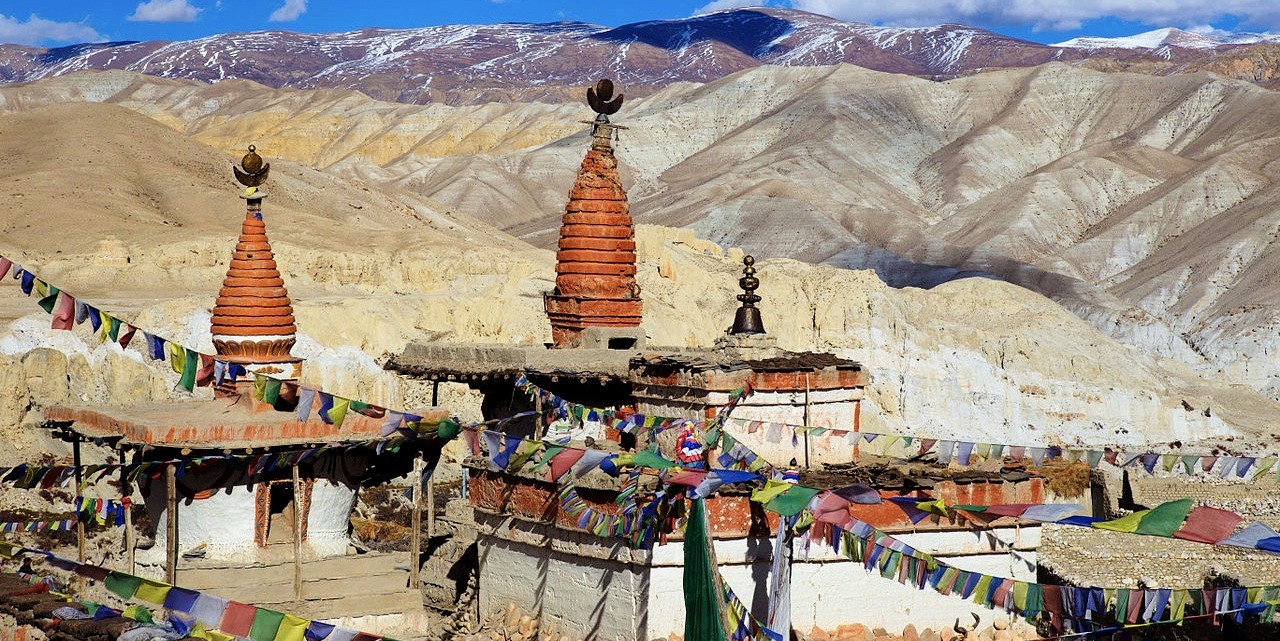
Key Highlights of Mustang
-
Lo Manthang: The walled capital of Upper Mustang is an architectural wonder. Lo Manthang contains ancient monasteries and palaces, and it hosts the Tiji Festival, an annual three-day ritual known for its colorful dances and costumes, which celebrates the myth of a son who had to save the Mustang kingdom from destruction.
-
Ancient Monasteries: Mustang is dotted with centuries-old Tibetan Buddhist monasteries like Ghar Gompa and Thubchen Gompa. These monasteries house stunning murals and ancient Buddhist texts.
-
Unique Landscape: The landscape of Mustang is a dramatic, high-altitude desert with deep gorges and rock shelves, flanked by snowy peaks. This stark scenery is unlike anywhere else in Nepal.
-
Chhoser Cave: This complex of man-made caves, used as dwellings centuries ago, is a testament to Mustang's rich history and the ingenuity of its people. Exploring these caves provides a glimpse into the past and offers spectacular views of the valleys below.
-
Trekking Routes: Mustang offers some of the best trekking routes in Nepal, including the challenging trek to Lo Manthang, which involves crossing high passes and navigating through arid landscapes. The region's stark beauty and isolation offer a profoundly different experience compared to the lush green trails found elsewhere in Nepal.
-
Sky Caves: Over 10,000 man-made caves are carved into the sides of valleys. Some of these caves are stacked high and steep in the cliffs and are believed to be over 2,000 years old. These mysterious caves are an archaeological enigma and a highlight for any visitor.
Travel Tips
-
Permits and Regulations: Access to the Upper Mustang is restricted; trekkers need a special permit and must be accompanied by a government-authorized guide.
-
Acclimatization: The high altitude of the Mustang can be challenging, so it's important to schedule days for acclimatization during treks.
-
Cultural Sensitivity: Mustang's culture is closely linked to Tibet. Respect local traditions and religious sites, and always ask permission before taking photographs of people or religious ceremonies.
-
Prepare for the Elements: The weather can be unpredictable, and nights are cold. Layered clothing, good trekking boots, and sun protection are must-haves.
Mustang is a destination that promises the adventure of a lifetime with its untouched natural beauty, rich history, and vibrant cultural heritage, making it a must-visit for those seeking to explore the less-trodden paths of the Himalayas.
Tips for Best Places to Travel in Nepal During Spring Season
Traveling to Nepal during the spring season, which spans from March to May, offers a magical experience with warm weather, vibrant landscapes, and numerous festivals. Here are some essential tips for exploring the best places in Nepal during this prime season:
-
Choose the Right Destinations: Spring is ideal for trekking given the favorable weather conditions. Key trekking destinations like the Everest Base Camp, Annapurna Circuit, and the Langtang Valley are particularly beautiful as the flora comes to life. Cultural hubs like Kathmandu Valley and the city of Pokhara are also vibrant during this time, with clear skies and numerous cultural events.
-
Pack Appropriately: Daytime temperatures can be warm, but mornings and evenings in the mountains are still chilly. Layered clothing is essential. Include a mix of light clothes and warm layers, along with a waterproof jacket, as pre-monsoon showers can happen in late spring.
-
Plan Around Festivals: Spring is a festive season in Nepal, featuring Holi (the festival of colors) in March and Buddha Jayanti (the celebration of Buddha's birthday) in May. Participating in these festivals can provide deeper insight into Nepalese culture and tradition.
-
Book in Advance: Spring is a peak tourist season in Nepal due to the excellent weather for trekking and sightseeing. It's wise to book your accommodations, flights and guides well in advance to ensure availability and avoid the higher costs of last-minute bookings.
-
Stay Hydrated and Protected from the Sun: The sun can be surprisingly intense, especially at higher altitudes. Carry sunscreen, sunglasses, and a hat to protect against sunburn. Staying hydrated is crucial, especially while trekking.
-
Prepare for Altitude: If you're trekking, it's essential to acclimatize properly to avoid altitude sickness. Plan your itinerary to include days for acclimatization, especially if you're trekking to higher elevations like Everest Base Camp or Annapurna Base Camp.
-
Respect Local Customs and Environment: When visiting religious sites, dress modestly and behave respectfully. Nepal is also struggling with pollution issues, so minimize your environmental impact by reducing waste, using refillable water bottles, and staying on established trails during treks.
-
Engage with Locals: Nepalese people are known for their hospitality and friendliness. Engaging with locals can enrich your travel experience, offering personal insights into the local lifestyle and traditions.
-
Check for Travel Advisories and Local Conditions: Always check current travel advisories and local weather conditions before your trip. This is particularly important if you plan to trek, as conditions in the mountains can change rapidly.
-
Carry Cash and Understand Connectivity: While major cities and towns accept credit cards, remote areas require cash. Connectivity can also be an issue in rural and mountainous areas, so prepare accordingly.
Following these tips will help ensure a memorable and enjoyable trip to Nepal during its beautiful spring season, allowing you to fully appreciate the natural beauty and cultural richness of this Himalayan nation.
Exploring Nepal during the spring season offers an unparalleled opportunity to witness the country at its most vibrant. From the blooming rhododendrons on mountain trails to the colorful festivities in the cities, spring breathes life into the landscapes and communities of Nepal. Whether you're trekking to the awe-inspiring base camps of the world's highest peaks, participating in rich cultural traditions, or simply enjoying the scenic beauty and wildlife, Nepal in spring caters to all kinds of travelers. With careful planning and a spirit of adventure, visitors can enjoy the perfect blend of natural beauty, cultural richness, and adventure that Nepal offers during these magical months. Remember to respect the local customs and environment as you explore, and you're sure to have an unforgettable journey in one of the most breathtaking countries on Earth.
FAQs for Best Places to Travel in Nepal During Spring Season
Q: What is the weather like in Nepal during the spring season?
A: Spring in Nepal (March to May) generally offers mild to warm temperatures, with daytime temperatures ranging from 10°C to 30°C depending on the altitude. Nights can still be cold in the mountains, so packing layered clothing is advisable.
Q: Is spring a good time for trekking in Nepal?
A: Yes, spring is one of the best times for trekking in Nepal. The weather is generally stable and warm, which provides excellent conditions for trekking in the Himalayas. Additionally, the landscapes are vibrant with blooming flowers, especially rhododendrons, the national flower of Nepal.
Q: Which festivals can I experience in Nepal during the spring?
A: Spring in Nepal hosts several vibrant festivals. Holi, the festival of colors, is celebrated in March, and Buddha Jayanti, commemorating the birth of Gautama Buddha, occurs in April or May, depending on the lunar calendar.
Q: Are there any specific health concerns I should be aware of when traveling to Nepal in spring?
A: While spring is generally a healthy time to visit Nepal, travelers should take precautions against sun exposure and dehydration, especially while trekking. Altitude sickness is another concern in higher elevations, so acclimatizing properly is crucial.
Q: What are the must-visit destinations in Nepal during spring?
A: Key destinations include the trekking routes to Everest Base Camp and the Annapurna Circuit, cultural tours in Kathmandu Valley, wildlife viewing in Chitwan National Park, and spiritual visits to Lumbini. Each offers unique experiences suitable for springtime exploration.
Q: Do I need any permits for trekking in Nepal during the spring?
A: Yes, trekkers need to obtain various permits depending on their destination. The TIMS (Trekkers' Information Management System) card is required for most trekking areas, along with area-specific permits like the Annapurna Conservation Area Permit (ACAP) or the Everest Base Camp Permit.
Q: What should I pack for a spring visit to Nepal?
A: Essential items include breathable but warm clothing, a sturdy pair of trekking boots, a waterproof jacket, sunscreen, sunglasses, a hat, and a good quality sleeping bag if you plan on trekking. Don't forget to pack your camera to capture the stunning scenery!
Q: How crowded are the tourist spots in Nepal during spring?
A: Spring is a peak tourist season in Nepal, especially on popular trekking routes like Everest Base Camp and the Annapurna region. Early booking of accommodations and guides is recommended to ensure availability.
Q: Can I participate in any adventure sports in Nepal during spring?
A: Yes, spring is a great time for adventure sports in Nepal. Paragliding in Pokhara, white-water rafting on the Trishuli and Bhote Koshi rivers, and zip-lining are popular activities that take advantage of the favorable weather conditions.
Q: What is the best way to travel within Nepal during spring?
A: Domestic flights, buses, and private vehicles are common modes of transport. Flights are recommended for distant destinations to save time, while buses and private vehicles are ideal for exploring local areas at a leisurely pace.
For the Nepal tour, please click here.
If you are looking for different kinds of Nepal Tours or Trekking Packages, feel free to contact us.
